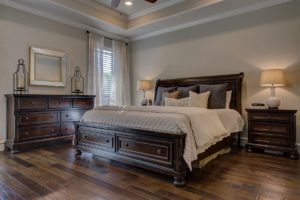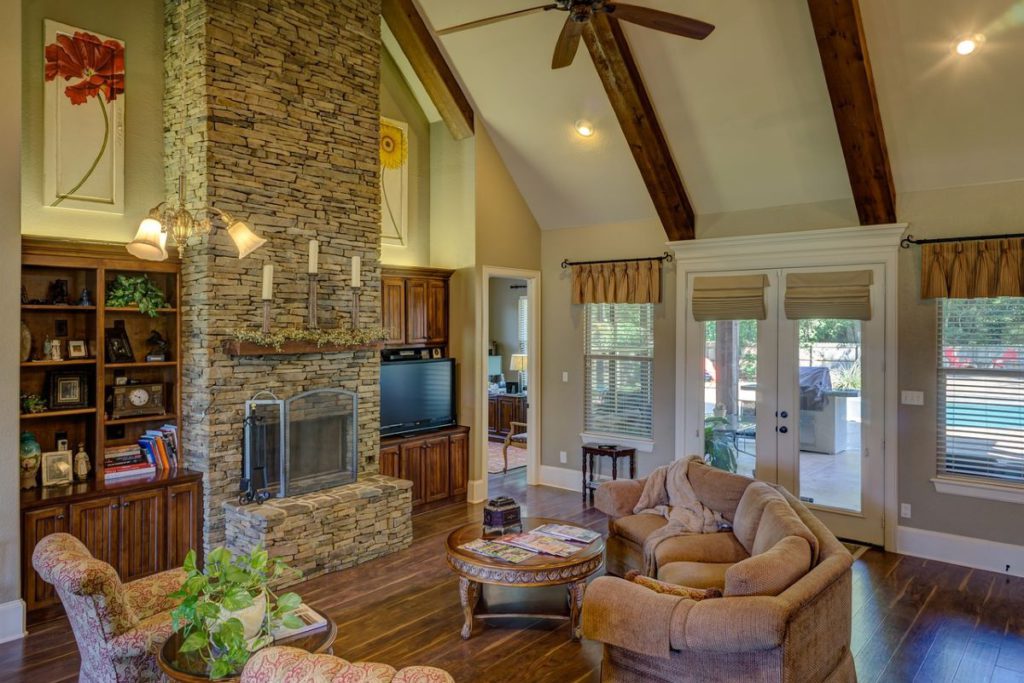Just like your favourite colour or your ‘go-to’ clothing pieces, your design style can give a lot away about who you are. You might be thinking, “Ahh, this isn’t me; I don’t have an interior design style,” but take a minute to think of all the items and decorations you have added to your home over the years.
Whether this curation has been calculated or is simply made up of random additions, we all have a unique sense of style for the interior of our homes.
Over the years, professionals have grouped most trends, even given them names, and matched them up with personality types that are most likely to gravitate towards them.
It’s also the simple additions that aren’t necessarily following a particular style that indicates much about the feelings and thoughts that make up who we are.
Colour Schemes
The decisions you make about the colours you bring into your home will say a lot about your personality. Generally speaking, rooms that are filled with bright colours and bold feature walls are homes to upbeat and optimistic people. Bright oranges, pinks and yellows are indicative of an outgoing and energetic personality.
Conversely, if your home is full of muted tones made up of blues, greens and reds, then it’s more likely that you have a calm and reserved countenance. Then there’s the third category, made up of homes filled with crisp whites across accent walls. These beautiful designs give an air of sophistication that often matches the occupant. It indicates a high level of professionalism and productivity and is generally paired with a well-kept, fresh and tidy décor.
Walls

How you choose to cover or add to your walls is largely linked to your personality. Those of us with well-thought-out curations of our favourite artists are likely artsy ourselves. Artistic people are much more likely to seek out and enjoy traditional art pieces. Within this category of decoration, there are also those that go with traditional styles, mainstream styles or eclectic and unique pieces. Some of us prefer to go with a less formal style of wall decoration, often opting for prints or posters of popular culture or artworks with less structure.
This often speaks to a relaxed personality style in which the occupant is fun-loving and drawn to options that bring the comfort of familiarity and symbolism linked with their hobbies and interests. Lastly, you have the category that likes to plaster their walls with keepsakes, personal photographs and mementoes.
This group is generally made up of sensitive and emotionally driven individuals. They are often quite sentimental in nature and prefer to be surrounded by reminders of their experiences and tokens of affection to their loved ones.
Open vs Closed Living Spaces
While we often have very little control over whether our home has an open living plan or is separated by walls and doors, we do make a decision before moving in. Those of us that pick an open planned space for our decorative base are likely very social and inclusive personality types.
Open-plan living affords a communal atmosphere and allows all members of the household to come together with ease. This type of person is likely to have enough seating to rival the number of boardroom chairs Melbourne offices boast. They are also likely to enjoy being outdoors – their love of open spaces inside is a mirror to their enjoyment of wide open spaces in nature. Alternatively, those of us who prefer a more sectioned style of floor plan tend to be a bit more introverted. They enjoy their comfy cosy vibes and the privacy this design affords. Individuals who lean towards a segregated home may also be more private in nature and give little away by accident. They are more inclined to have fewer friends but a closer bond as opposed to a room full of people – hence the lack of requirement for open space.
Minimalistic or Maximalistic
There’s generally a pretty even split of personalities that enjoy having a minimal design style as opposed to a maximal one. Minimal design will see fewer items of furniture and strategically and sparingly placed decorative aids. Each room will appear tidy and airy with just a simple and necessary amount of furnishings.
An office space in a minimalist’s home will likely consist of practical storage space, a perfect-sized desk to meet their needs and the best ergonomic chair Australia has to offer. A Maximalist, on the other hand, will have so many items of furniture and decorative aids that it’s a wonder there’s even enough room for it all – though somehow their homes never seem to feel cluttered.
The personality types of these design enthusiasts are exactly what you’d expect. Our Minimalists are pragmatic and organised with lists and schedules. You know they have a few Excel spreadsheets on the go. Our Maximalists are chaotic and impulsive and fly by the seat of their pants. This generally allows them to be creative and very fun to be around, even if they are late more often than not.
Lighting and Aesthetic
Overall, when we enter a person’s home, we’ll get a feel for what kind of aesthetic matches their baseline mood and brings them peace. Much of this perception comes from their lighting choices and the undertones of their furnishings or decorative aids. Those of us with a more positive outlook on life (or that maybe live through some rose-coloured glasses) will be opting for airy and bright spaces.
They’ll be quick to challenge the interior designers Sydney has to offer with ways to increase and utilise their available natural light. Any wooden additions to their home will be in lighter varieties, and they’ll opt for a deck sealer over a dark timber stain.
People who tend towards more of a realistic attitude or even find they can be a little pessimistic will likely be drawn to moodier environments. They’ll choose darker grains for their wooden decorative pieces and hang heavier curtains to control their natural light. While both design styles can be absolutely beautiful if appropriately executed, it’s also true that a decision between the two is very telling.
Whatever style of interior design you go for, it’s important to be true to what you like and what reflects your own sense of style.

